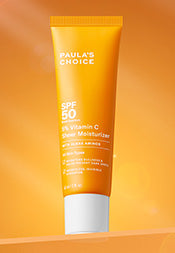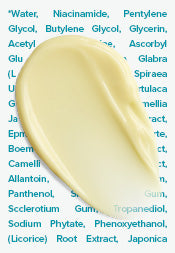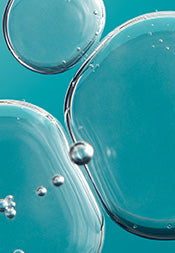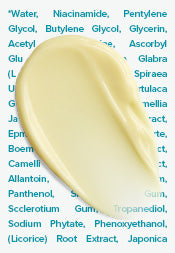Does Tea Tree Oil Help Acne?
As it turns out, tea tree oil does have some treatment benefits for acne-prone skin – if you use the right concentration. However, conclusive research has not shown tea tree oil to be significantly better than a 5% concentration of benzoyl peroxide. It’s also no match for the results made possible from a leave-on exfoliant with 2% salicylic acid. Benzoyl peroxide and salicylic acid are also U.S. FDA-approved active ingredients for acne; tea tree oil does not have this distinction.
Despite not being better than the gold standard acne-fighting ingredients, you might still want to experiment with this natural alternative. But how do you use tea tree oil for your acne?
How does tea tree oil work?
Pure tea tree oil is extracted from the leaves of the tea tree. Its herbal, slightly medicinal scent actually includes a mix of over 100 compounds! Some of these compounds are believed to calm factors in skin that contribute to how acne looks and feels – leading to the ingredient’s growing popularity as a natural acne treatment.
Research has shown that topical application of a 5% concentration of tea tree oil can help to reduce the number of papules and pustules – both types of pimples that people with acne usually experience. It does this by working against an imbalance in skin’s bacteria, which is the key catalyst that leads to acne breakouts. However, it’s important to know that tea tree oil does not have official status as an acne-fighting ingredient and has not been approved by the U.S. FDA as an active ingredient for acne treatment.
How much tea tree oil do you need?
The concentration is the sticking point when incorporating tea tree oil into your skincare routine: The highest concentration of tea tree oil we’ve seen in a cosmetic product is typically less than 0.5%, far below what research has shown is needed for skin to benefit. Lower amounts such as those between 0.25% to 1.25% might have in vitro (petri dish) research showing its effects on the inhibition of acne-causing bacteria; however, this doesn’t necessarily correlate with how this ingredient behaves on human skin.
The brown glass bottle-packaged “straight” tea tree oil found in health food stores is typically a 3% concentration diluted in a carrier oil, so even that isn’t strong enough, despite the “100% tea tree oil” statement you might see on the label.
If you can find a strong enough concentration of tea tree oil to meet what research suggests is the optimal level, it’ll likely be too strong, which can trigger a sensitised reaction if you don’t dilute it before applying it to your skin. Among the 100 compounds in tea tree oil are fragrance ingredients like limonene, linalool, and eucalyptol, all believed to be responsible for adverse skin reactions to tea tree oil.
Our advice? Why take the risk or go through the guessing game of dilution when other over-the-counter (or prescription) acne treatment skincare products can work with greater certainty?
Board-Certified Dermatologist Dr. Corey L. Hartman's advice: “With so many great active ingredients to treat acne on the market today and new compounds being introduced every day, why take a chance on an ingredient that is only as good as proven therapies, but carries a risk of being ineffective or overly irritating? It’s not worth it”.
How to use tea tree oil for acne
What if you still want to try tea tree oil for acne? We understand the pull, especially if acne skincare products haven’t worked the way you hoped or if you wish to use more natural products. If you decide to try tea tree oil, proceed with caution and stop using it if you see signs of irritation.
Here’s how to use it:
- Wash your face with a gentle face cleanser for breakout-prone skin.
- Apply a leave-on anti-acne treatment.
- Dispense a few drops of tea tree oil onto a damp cotton swab and dot it directly on blemishes.
- Alternatively, you can mix 5–6 drops of tea tree oil into a lightweight facial moisturizer and apply it to your entire face.
- As with any skincare routine, protect your skin every morning with a broad-spectrum sunscreen rated SPF 30 or greater.
Key things to look out for and avoid:
- Don’t apply a benzoyl peroxide product until you know how your skin responds to the tea tree oil.
- Don’t apply an over-the-counter or prescription retinol product until you know how your skin responds to tea tree oil.
Learn more about the causes and how to prevent acne breakouts.
Shop for effective acne-prone skincare products online today and tackle your acne skincare concerns.
References for this information:
Biomedica, December 2020, pages 693–701
Contact Dermatitis, September 2016, pages 129–143
Dermatologic Therapy, May 2015, page 404
International Journal of Antimicrobial Agents, February 2015, pages 106–110
International Journal of Dermatology, July 2013, pages 784–790
Journal of Food and Drug Analysis, June 2013, pages 169–176
Chemical Research in Toxicology, March 2012, pages 713–721
Australasian Journal of Dermatology, May 2007, pages 83–87
Recommended Products
CLEAR Regular Strength Exfoliating Solution 2% BHA
CLEAR Regular Strength Daily Skin Clearing Treatment 2.5% BP











